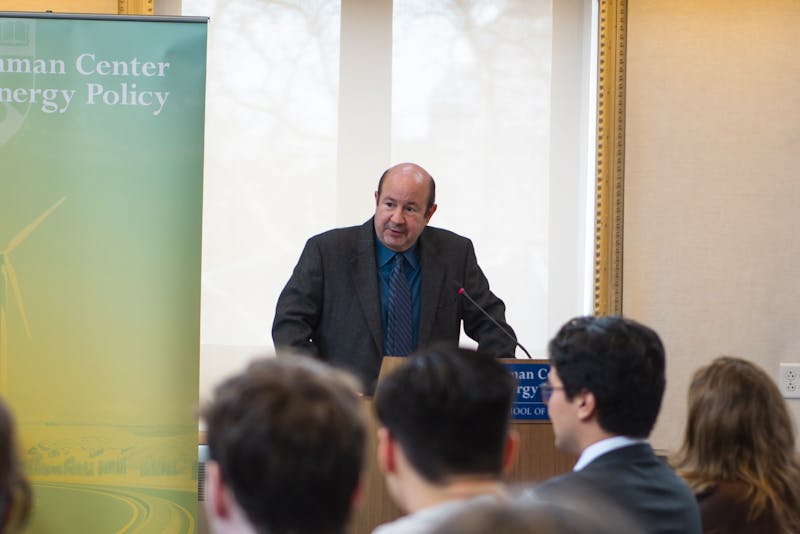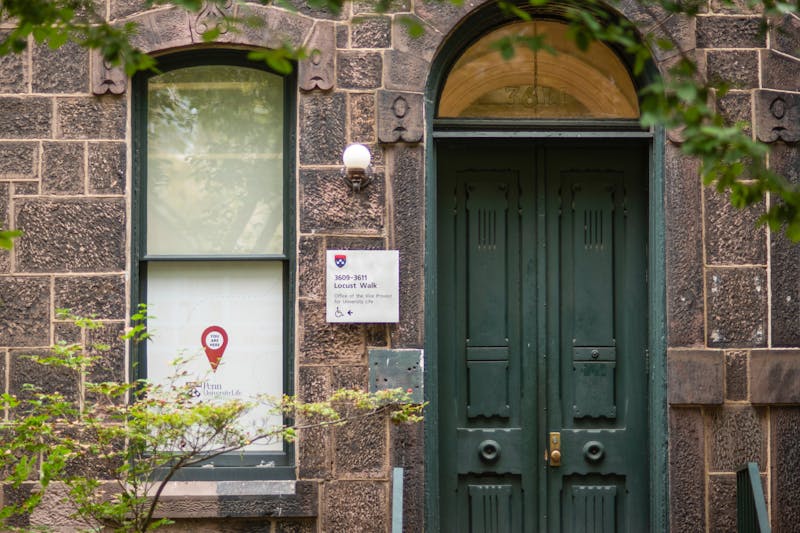Frequent church attendance may significantly increase the odds of marriage for urban women, according to a recent report released last week by Penn's Center for Research on Religion and Urban Civil Society.
Entitled "Then Comes Marriage? Religion, Race and Urban Civil Society," the study's findings indicate that odds for urban mothers who attend church regularly to be married or to get married are much higher than for those who don't.
According to W. Bradford Wilcox, the report's author, this evidence implies that the religious institutions -- especially those in urban communities -- promote values that are conducive to building spousal relationships.
"In many urban communities where marriage is endangered, the church is kind of a pillar of marriage," the University of Virginia sociology professor said. "It is one of the few institutions in the urban community that is really fostering marriage."
This link between church attendance and marriage was found to be particularly evident among African-American and white mothers. In both cases, women from both of these groups were reported to be 116 percent and 118 percent more likely to be married, respectively.
"Basically, I'm finding a strong association between frequent church attendance and the odds that an urban mother will be married at the time of a birth of a child," Wilcox said. "Church attendance is particularly valuable in promoting marriage among African-American women."
Another point that the study makes is that one-third of all unwed, urban mothers regularly attend church.
According to Wilcox, this data suggests that church attendance among urban mothers does not guarantee that they will ultimately get married. Instead, Wilcox said that this evidence points toward the evolving role that religious institutions may be playing in society.
"Unmarried mothers are much more integrated in religious institutions than they were thirty to forty years ago," Wilcox said. "Back then, [mothers] were excluded from the congregation if [they] were not married."
Regardless, Wilcox said that religious institutions have room to further develop support networks for single parents.
"My argument in the report is that churches could do more to reach out to the unwed mothers in their pews and to provide them with counseling and support that they need to make the transition to marriage when it's appropriate," he said.
The release of this study comes at the heels of the Bush Administration's proposal to direct as much as $200 million annually to programs promoting healthy and stable marriages among lower-income couples.
If passed, this funding would support the development of several state-wide campaigns geared toward reducing out-of-wedlock births by focusing on family formation and healthy marriage activities. Faith-based initiatives may be included in these efforts to increase the number of two-parent families across the countries.
According to John DiIulio, a Penn political science professor and former head of the White House Office of Faith-Based and Community Initiatives, the report's findings should not serve as grounds for adopting faith-based welfare reforms.
"It is very difficult to develop meaningful policy responses to such findings, and the Bush administration's present proposal on fostering marriage would appear to be quite wide of the mark," DiIulio said.
CCRUCS director Byron Johnson agreed, but noted that legislators should not completely overlook the role that religious institutions can play in fostering marriage.
"You shouldn't create policy based on this study alone," Johnson said. "Then again, as policy makers begin to think about marriage and ways they can improve the prospect of marriage among the poor, they shouldn't leave out the consideration that houses of faith should be involved."
Wilcox, too, expressed a degree of ambivalence about the current proposals which would direct government funding to non-secular groups.
"I have some reservations about public money going to religious organizations because this money will be used to encourage faith-based organizations to change their methods about marriage," Wilcox said. "I'm not sure if it's going to be good for couples or religious institutions."
As opposed to interfering with the church's role in promoting marriages, Wilcox said that it might not be a good idea for the government to financially endorse religious institutions.
"What the report is trying to say is that there are some things that the civic arena can do that may or may not involve the state," Wilcox said. "In a way, civil society is better equipped to promote marriage than the state and federal government are."
The report's findings are based on evidence from the Fragile Families and Child Wellbeing Study, a nation-wide survey designed to analyze the lifestyles and attitudes of new unwed parents.
Drawn from approximately 3,886 interviews with unmarried and married mothers across the country, this data reflected the attitudes toward marriage across different religious and cultural groups.
Due to the fact that the CCRUCS report is the first of its kind, Johnson said that it would require further research into this issue before any broad-based conclusions about how religion may promote marriage among urban mothers could be made.
"The report says that something is going on in these communities when you're 100 percent more likely to marry if you attend church regularly, but you wouldn't want to take the findings and go too far with them," Johnson said. "What we have in this report is just the beginning of research in this area."
The Daily Pennsylvanian is an independent, student-run newspaper. Please consider making a donation to support the coverage that shapes the University. Your generosity ensures a future of strong journalism at Penn.
DonatePlease note All comments are eligible for publication in The Daily Pennsylvanian.







